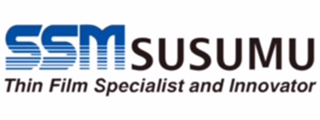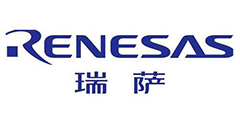- Ameya360 Component Supply Platform >
- Trade news >
- ROHM Publishes White Paper on Power Solutions for Next-Generation 800 VDC Architecture Aligned with the Industry's 800 VDC Roadmap to Enable Gigawatt-Scale AI Infrastructure
ROHM Publishes White Paper on Power Solutions for Next-Generation 800 VDC Architecture Aligned with the Industry's 800 VDC Roadmap to Enable Gigawatt-Scale AI Infrastructure
ROHM has released a new white paper detailing advanced power solutions for AI data centers based on the novel 800 VDC architecture, reinforcing its role as a key semiconductor industry player in driving system innovation.
As part of the collaboration announced in June 2025, the white paper outlines optimal power strategies that support large-scale 800 VDC power distribution across AI infrastructure.
The 800 VDC architecture represents a highly efficient, scalable power delivery system poised to transform data center design by enabling gigawatt-scale AI factories. ROHM offers a broad portfolio of power devices, including silicon (Si), silicon carbide (SiC), and gallium nitride (GaN), and is among the few companies globally with the technological expertise to develop analog ICs (control and power ICs) capable of maximizing device performance.
Included in the white paper are ROHM’s comprehensive power solutions spanning a wide range of power devices and analog IC technologies, supported by thermal design simulations, board-level design strategies, and real-world implementation examples.
[Access the white paper here]
Key Highlights of the White Paper• Rising Rack Power Consumption: Power demand per rack in AI data centers is rapidly increasing, pushing conventional 48V/12V DC power supply systems to their limits.
• Shift to 800 VDC: Transitioning to an 800 VDC architecture significantly enhances data center efficiency, power density, and sustainability.
• Redefined Power Conversion: In the 800 VDC system, AC-DC conversion (PSU), traditionally performed within server racks, is relocated to a dedicated power rack.
• Essential Role of SiC and GaN: Wide bandgap devices are critical for achieving efficient performance. With AC-DC conversion moved outside the IT rack, higher-density configurations inside the IT rack can better support GPU integration.
• Optimized Conversion Topologies: Each conversion stage—from AC to 800 VDC in the power rack and from 800 VDC to lower voltages in the IT rack—requires specialized solutions. ROHM’s SiC and GaN devices contribute to higher efficiency and reduced noise while decreasing the size of peripheral components, significantly increasing power density.
• Breakthrough Device Technologies: ROHM’s EcoSiC™ series offers industry-leading low on-resistance and top-side cooling modules ideal for AI servers, while the EcoGaN™ series combines GaN performance with proprietary analog IC technologies, including Nano Pulse Control™. This allows for stable gate drive, ultra-fast control, and high-frequency operation–features that have earned strong market recognition.
The shift to 800 VDC infrastructure is a collective industry effort. ROHM is working closely with NVIDIA, data center operators, and power system designers to deliver essential wide bandgap semiconductor technologies for next-generation AI infrastructure. Through strategic collaborations, including a 2022 partnership with Delta Electronics, ROHM continues to drive innovation in SiC and GaN power devices, enabling powerful, sustainable, and energy-efficient data center solutions.
ROHM’s EcoSiC™

EcoSiC™ is ROHM’s brand of devices that utilize silicon carbide, which is attracting attention in the power device field for performance that surpasses silicon. ROHM independently develops technologies essential for the advancement of SiC, from wafer fabrication and production processes to packaging, and quality control methods. At the same time, we have established an integrated production system throughout the manufacturing process, solidifying our position as a leading SiC supplier.
・EcoSiC™ is a trademark or registered trademark of ROHM Co., Ltd.
Online messageinquiry

ROHM launches RPR-0730: High-Speed, High-Precision Optical Sensor Featuring VCSEL Technology

ROHM’s Three-Phase Brushless DC Motor Gate Driver Achieving FET Heat Reduction while Suppressing EMI
- Week of hot material
- Material in short supply seckilling
| model | brand | Quote |
|---|---|---|
| MC33074DR2G | onsemi | |
| CDZVT2R20B | ROHM Semiconductor | |
| RB751G-40T2R | ROHM Semiconductor | |
| BD71847AMWV-E2 | ROHM Semiconductor | |
| TL431ACLPR | Texas Instruments |
| model | brand | To snap up |
|---|---|---|
| STM32F429IGT6 | STMicroelectronics | |
| BU33JA2MNVX-CTL | ROHM Semiconductor | |
| ESR03EZPJ151 | ROHM Semiconductor | |
| IPZ40N04S5L4R8ATMA1 | Infineon Technologies | |
| TPS63050YFFR | Texas Instruments | |
| BP3621 | ROHM Semiconductor |
- Week of ranking
- Month ranking
Qr code of ameya360 official account
Identify TWO-DIMENSIONAL code, you can pay attention to


Please enter the verification code in the image below:
























